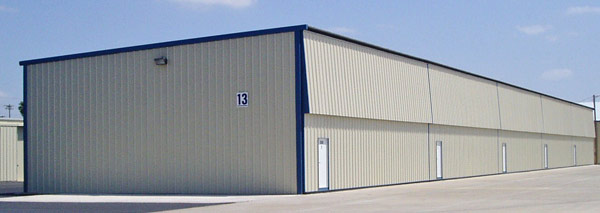
This is a summary that may be helpful to anyone interested in a hangar or tie down at Brandywine Regional Airport. For questions: John Kassab, 610-842-3804 or Dan at dsundt@verizon.net
In 1997, Bill Wilson, owner of Brandywine Airport, decided it was a time in his life to sell the airport. Brandywine Airport was privately owned, but open for public use. At the time, according to the AOPA, airports across the United States were closing at the rate of one a week due to land values becoming so high. The airport was opened in 1939 when the area was mostly inexpensive farm land. Since then the area has developed into what is know as the 202 corridor, valuable office and industrial space.
The value of the property was $2.5 million. A typical privately owned airport doesn’t create the revenue to even pay the interest on that amount. It appeared the airport was going to be sold to a developer.
Len Blair, a local pilot, came up with a plan for the pilots to purchase the airport. At the time there were no T-hangars. Len’s plan was that if a pilot purchased 1 share, $10,000, of the airport he would have the right to an outside tie down, if 2 shares, $20,000, the right to a T hangar, if 4 shares, $40,000, the right to a corporate box hangar. A hangar shareholder had to pay in addition to the shares the construction cost of the hangar. In the end, a T-hangar with heat, concrete floor and insulation was a total of $43,000 including the cost of the shares. A corporate hangar was $120,000. That was in 1997.
Len’s plan succeeded. 10 tie downs, 60 T-hangars and 10 corporate hangars were built. All occupied by shareholders. The airport is run by a seven member board of directors elected by the shareholders. One must be a shareholder to be on the board.
If you’re interested in purchasing shares for a hangar it is important to understand that you don’t own it. The airport does. You have the right to use it. Pretty much the hangar is yours to use, you just don’t own that particular piece of property. You do, however, own shares of the airport. Be advised that it would be unlikely that a bank would finance the hangar as you receive a stock certificate and not a deed. One is not required to own shares of the airport to keep their aircraft at OQN. There are tie downs available at $120.00 per month or they can negotiate an agreement with a shareholder for a tie down or hangar.
As of March 2024 there are no shares of hangars available for sale. The last T-hangar shares sold for $200,000 and the last corporate hangar $525,000. Some of the shareholders rent their T hangars for between $600 to $850 per month.
Any purchase or rental negotiations are between the shareholder and the buyer or tenant. The airport employees will assist in getting the two parties together only. The employee does not expect and will not accept a commission.
It is expected for anyone with a T-hangar to purchase 34 gallons of fuel per month, corporate hangar 68 per month and tie down 17. At the end of each year your fuel purchases are calculated and any shortfall is charged $3.25 for each gallon short. This is because we want to encourage aircraft on the field to fly and not use the hangar as a storage facility. Shareholders receive a $1.00 discount off the list price of fuel. Tenants receive a $0.25 discount off the list price of fuel.
In order to make ends meet there is a monthly capital call of $160 for a T-hangar and $320 for a corporate hangar. It is called a capital call for accounting purposes. It’s similar to an assessment. In 2015, as the airport’s finances position improved and the capital call was lowered by 20%. The capital call can go up or down depending on the airport’s fortunes. There is also the possibility of a special assessment for items like excessive snow clearing, unexpected expenses and matching grant funds. There has not been a special assessment in over 15 years.
For the electricity bill, there’s one meter for each T-hangar row. The bill is divided among the shareholders in each row and the airport bills you quarterly. Typically the quarterly bill is less then $40.00. The corporate hangars are individually metered. The shareholders who have heaters in their hangar deal directly with PECO for their natural gas.
The FAA and PennDot Bureau of Aviation recognizes the value of Brandywine Regional Airport as part of the national transportation network and has designated it as a Regional Airport and as a reliever airport for PHL. They take into account the number of operations and number of aircraft based at the field. Considering these factors the airport qualifies for state and federal grant funds. Since 1997, the airport has received numerous grants to improve the facility for public benefit.
With this aid come conditions such as to remain an airport for a certain number of years after receiving the funds, keeping up to safety standards, and that the facilities be used for aviation purposes. This means that the hangars must have an aircraft in them and can not be used as a non-aviation storage facility.
See Hangar Sale Guidelines for a summary of these rules.
An airport that is privately owned by one individual is only as stable as the individual. A death or divorce could force a closure. For OQN to close would require a majority of the over 70 shareholders to approve.
The future of OQN looks promising. We have just secured a long term lease on our maintenance hangar, the flight schools are prospering, and finances are in order to construct 4 new corporate hangars with expected completion in the summer of 2024. Lastly, our original mortgage was paid off in July of 2023. This relieves the airport of a significant monthly payment.
